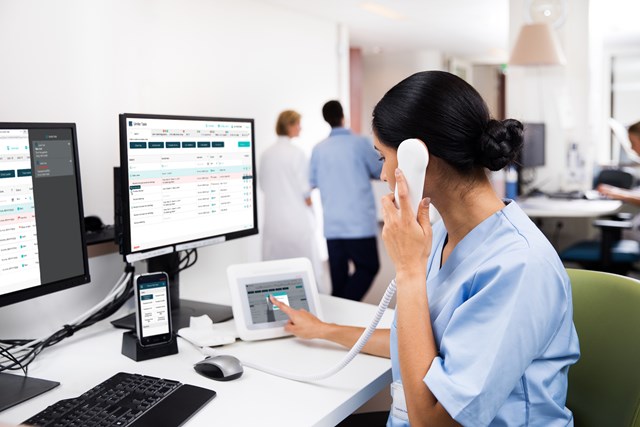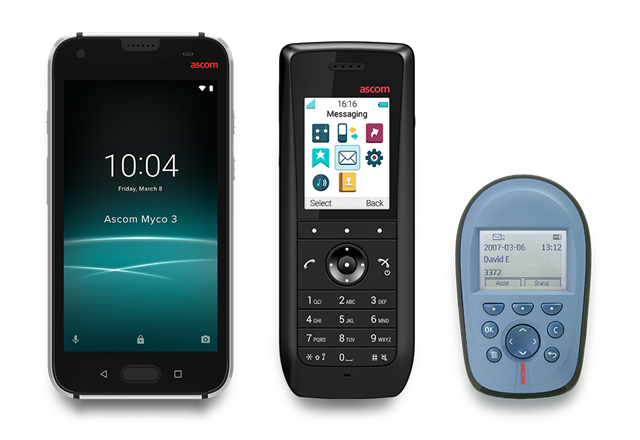Country Selector: United Kingdom
Ascom healthcare communication solutions are trusted by thousands of hospitals around the world. Interoperable with a vast range of existing healthcare systems and medical devices, these solutions help clinicians deliver even better care in even less time. Because they’re modular, they’re easily adaptable to changing needs and conditions. Ascom healthcare solutions - from consulting to critical care management and everything in between.
Designed together with healthcare professionals, and backed by support and training programmes - this is the expanded Ascom Healthcare Platform.
The Ascom Healthcare Platform is a unique range of clinical communications and collaboration solutions. Built on fifty-plus years of experience, these solutions are designed to help hospitals achieve the key goals of modern healthcare: reduced costs, improved population health, enhanced patient experience and healthcare team well-being. The Ascom Healthcare Platform - working with hospitals to deliver better patient outcomes.

Deployed around the world, Ascom teleCARE IP and Telligence nurse call systems are a benchmark in modular, interoperable healthcare workflow orchestration. Ensure patients and residents have the voice and reassurance they need - and your staff have the tools to access and respond to alerts, messages and clinical data.

Receive and respond to alerts while on the go. Collaborate and coordinate with colleagues while moving around a facility. Access clinical data - including live waveforms - wherever you are. Ascom mobile devices for healthcare include everything from the Android Enterprise Recommended* Myco 3 smartphone to a wide range of DECT and VoWiFi phones.
*Android is a registered trade mark of Google PLC.

Ascom solutions and hardware are powered by Ascom software that has been designed specifically for acute healthcare environments. This software is trusted and relied upon every day globally by hundreds of thousands of clinicians. Ascom is committed to open architecture - the Digistat and Unite software suites are interoperable with virtually every clinical communication device and system on the market.

Nobody understands a clinician’s work like a fellow medical professional. That’s why our team includes clinical consultants — most of them registered nurses. Working together with our IT specialists, they identify workflow bottlenecks, then suggest practical answers that best meet the needs of your staff and patients. Our team will help you extract the maximum operational and financial value from your Ascom solution.
